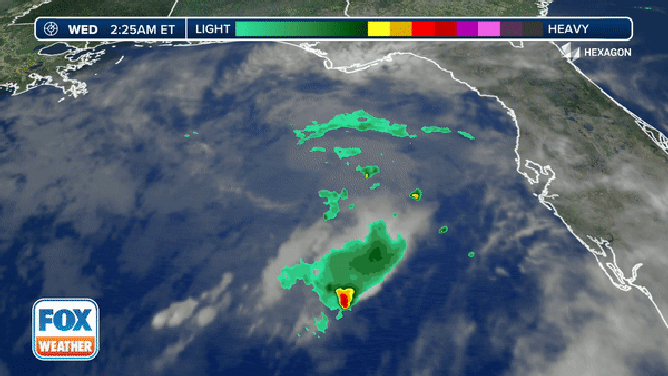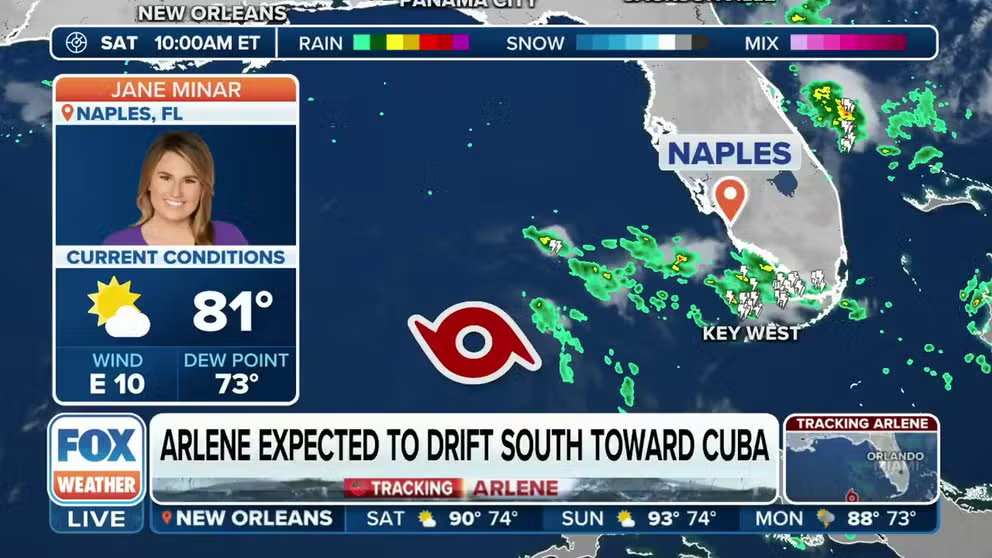Tropical Storm Arlene still swirling in Gulf of Mexico before expected weakening over the weekend
Tropical Storm Arlene formed in the Gulf of Mexico on Friday and became the first named storm of the 2023 Atlantic hurricane season. The Atlantic hurricane season officially began on Thursday.
Arlene expected to drift south toward Cuba
Tropical Storm Arlene is likely to lose Tropical Storm status by end of Saturday. June 3, 2023.
Tropical Storm Arlene formed in the Gulf of Mexico on Friday and became the first named storm of the 2023 Atlantic hurricane season.
Hurricane Hunter aircraft measured sustained winds at around 40 mph and that is what the official National Hurricane Center expect will be the system's peak intensity. Arlene is expected to weaken through the day Saturday.
The NHC previously dubbed this disturbance Invest 91L on Wednesday afternoon and then Tropical Depression Two on Thursday afternoon. An invest is simply a designation used by the NHC to identify an area of weather that is being investigated for possible tropical development. A tropical depression is a tropical cyclone that has maximum sustained surface winds of 38 mph or less.
Where is Arlene?

(FOX Weather)
Arlene is currently located in the northeastern Gulf of Mexico, more than 200 miles west of Fort Myers, Florida and about 165 miles west of the Dry Tortugas.
The cyclone is expected to continue to travel southward, over the open Gulf of Mexico, and not directly impact any U.S. landmasses as an organized system.
On the expected forecast track, the system or its remnants will parallel the Sunshine State, staying a couple of hundred miles offshore.
What is the forecast for Arlene?

(FOX Weather)
Arlene is expected to weaken Saturday to a Tropical Depression, then dissipate on Sunday though what's left of the cyclone could impact western Cuba with an increase in rainfall and wind for communities west of Havana.
The FOX Forecast Center said the combination of upper levels winds and dry air will be too significant for the cyclone to overcome despite water temperatures being sufficient to support tropical development in the Gulf of Mexico.
What are the impacts from Arlene?

(FOX Weather)
Arlene's track is expected to keep the storm offshore with no direct U.S. impacts. With its proximity to Florida, occasional surges of moisture could impact counties well south of Interstate 4.
Due to several days of rain in Florida before the formation of Arlene, the National Weather Service office in Miami issued Flood Watches for Miami-Dade, up to West Palm Beach and around Lake Okeechobee.
Forecasters warn an additional 1-3 inches of rainfall is possible in South Florida through Sunday.

TS Arlene radar animation
(FOX Weather)
